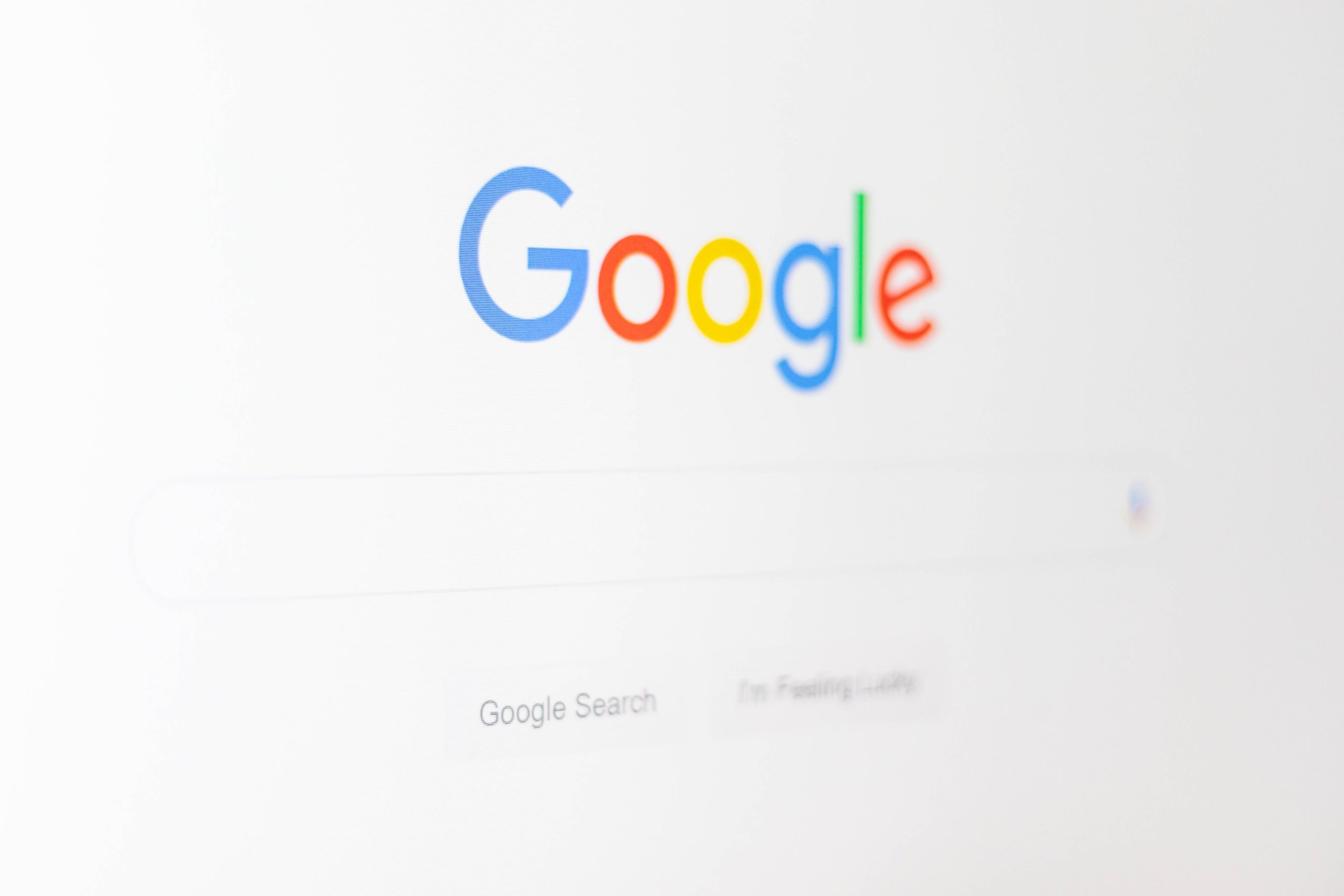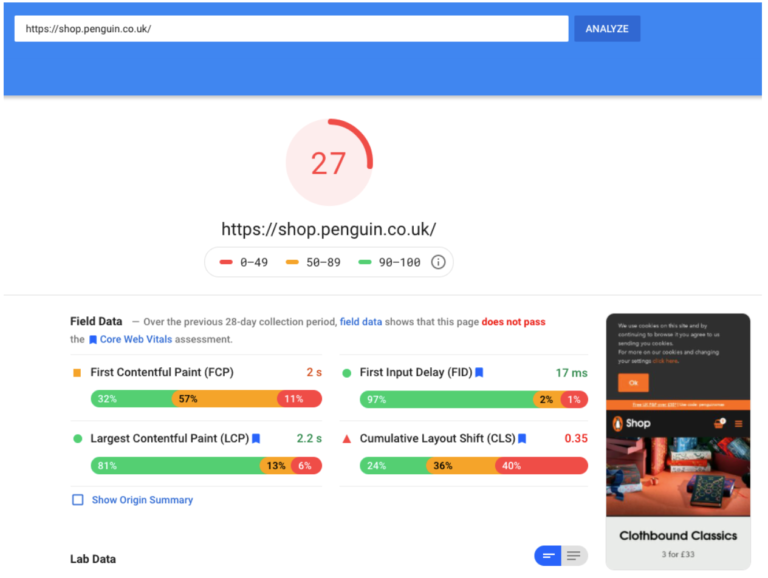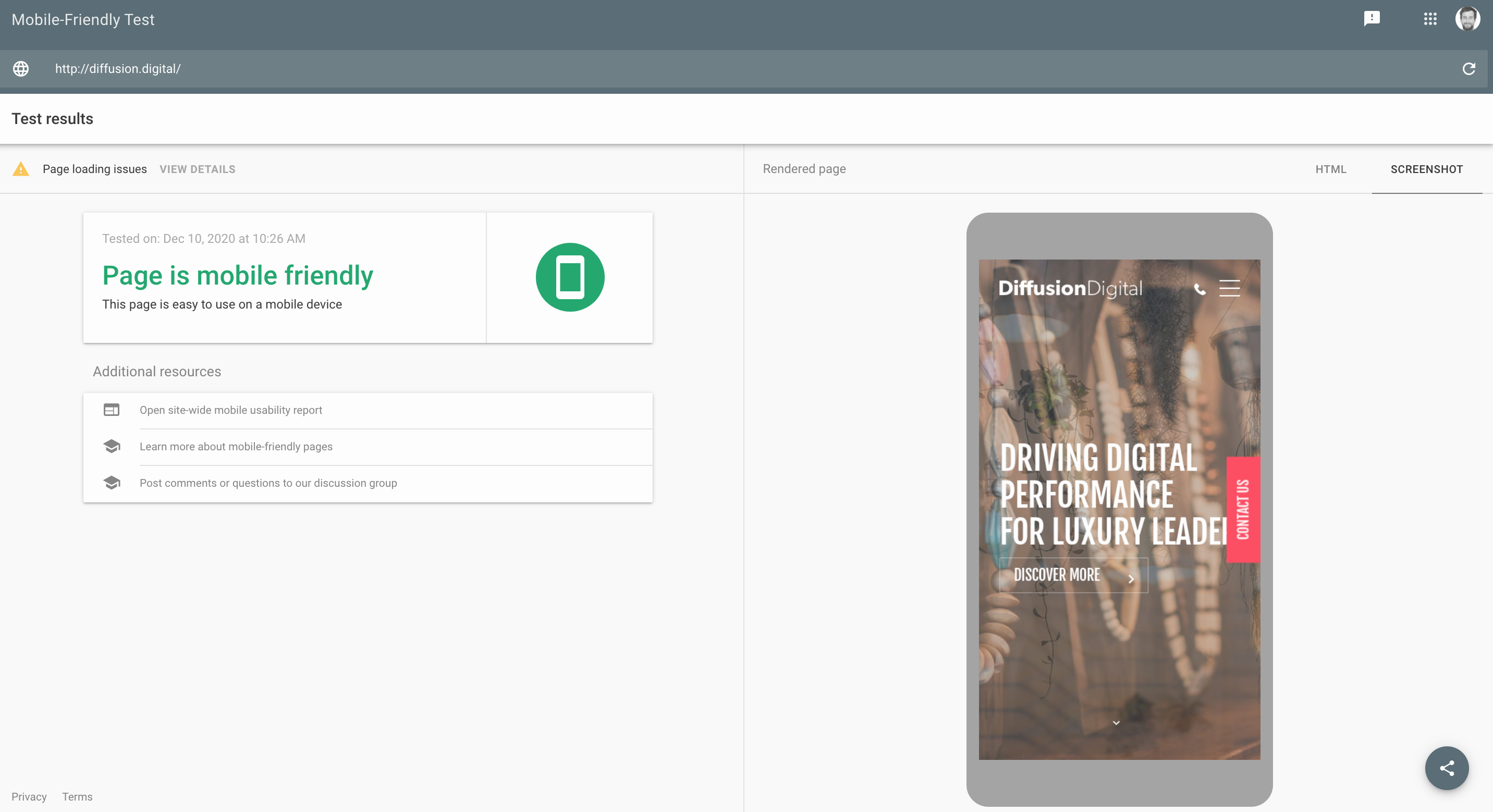What you need to know about the 2021 Google Page Experience Algorithm Update
Whilst Google has declared it will not be rolling out any more core updates to its algorithm in 2020, it’s time to prepare for what stands to be a bit of a game-changer to website rankings in 2021, with the introduction of the Page Experience core algorithm update.
The new google algorithm update 2021, In Google’s own words:
“The page experience signal measures aspects of how users perceive the experience of interacting with a web page. Optimizing for these factors makes the web more delightful for users across all web browsers and surfaces, and helps sites evolve towards user expectations on mobile. We believe this will contribute to business success on the web as users grow more engaged and can transact with less friction.” - Google
“Make the web more delightful” is what really stands out here and as with previous big core algorithm updates such as BERT, Penguin and E.A.T, again, Google is placing emphasis on understanding the user and delivering them not only what they want, but what they will seemingly ‘delight’ in.

The page experience update was supposed to be pushed live in mid 2020 however, with the world pushed to the edge of sanity already, and with hundreds of businesses rushing to move their proposition online, they have decided to give us time to make sure we’re set.
So it seems that after many years of speculation, Google does have a heart when it comes to releasing algorithm updates.
This is what they said:
“A note on timing: We recognize many site owners are rightfully placing their focus on responding to the effects of COVID-19. The ranking changes described in this post will not happen before next year, and we will provide at least six months' notice before they’re rolled out. We're providing the tools now to get you started (and because site owners have consistently requested to know about ranking changes as early as possible), but there is no immediate need to take action.” - Source: Google May 28, 2020
Google has given us due notice:
“Today we're announcing that the page experience signals in ranking will roll out in May 2021” (Nov 10 2020)
The clock is ticking and with this much lead time you can bet that the negative impact on websites that don’t meet Google’s Page Experience standards will be substantial.
So, what is this page experience update all about?
In May 2020, Google Chrome announced the new ‘Core Web Vitals’ that many of us picked up on when it was pushed live in Google Search Console. This new set of metrics aims to give site owners insights into the user experience of their website by tracking metrics such as page speed, responsiveness and visual stability.

Here are the main metrics now highlighted in Google Search Console:
Largest Contentful Paint
As has long been the case, websites should aim to achieve an LCP (load time) of less than 2.5s
Google Pagespeed Insights tool has been around for a while and is the benchmark for checking your sites load speed. However there are many variables to take into account such as server and location, as well as the platform your website is hosted on.
It is important to bear in mind that different platforms have their limitations when it comes to page load times. For example, many custom sites will often score an average result in page speed insights, and this is fairly well documented and even the biggest brands out there (see Penguin below) who currently dominate search, struggle with poor site speed. There comes a point where a compromise is necessary because those custom sites that really do take into account user experience, often use several plugins and it is these plugins that will affect page load speeds. It will be interesting to see how these sites fare when the new update is rolled out.

EXPERT TIP:
It is absolutely worth getting your site speed as quick as possible now. However, it is widely recognised that some platforms’ websites run slower than others. For example, using several plugins on Shopify can have a negative impact on page load times. But this may be the same for your competitors. It is worth benchmarking your page speed compared to that of your competitors around you in the results for specific keywords, as well as against those who are a few pages beneath you, or above. This will give you an idea of whether you need to do in order to defend your position from a site speed perspective, or you can continue as you are with caution. Once the algorithm rolls out, see how rankings have changed and which sites are ranking top – what is their site speed compared to yours?
Interactivity (First Input Delay FID):
This is a metric to measure the load responsiveness of your web pages. It helps evaluate how a user will engage with pages that are unresponsive – a low FID shows that the page is usable. A low FID is considered anything less than 100ms.
Stability
Everyone has experienced websites that shift when you try and click a button and you end up checking out, or losing your basket, right at the crucial moment. The Cumulative Layout Shift check, assesses how much your content moves during load and as a user scrolls down a page, this is a direct check on the responsiveness of a website. The number to aim for is 0.1 or less.
EXPERT TIP:
Interactivity and stability are both areas that need to be looked at by developers. If your website is built using a template on a well-known platform (Squarespace, WordPress, Shopify), most of these areas should be ticked off. However, if you’ve gone down a more custom approach, you may run into some issues and it is worth getting your developers to have a look if any problems are being flagged.
Alongside these innocent-sounding tracking metrics (hmm?), Google is also including mobile-friendliness, safe-browsing, HTTPS and non-intrusive interstitials as part of the latest ranking factor.

Mobile Friendly
This is an oldie but a goodie – is your website responsive? Check mobile-friendliness here
Increasingly users across all industries are using several sizes of screen a day to interact with content online and Google wants to ensure that websites are delivering their customers the best possible experience when they’re on the move, as well as when they’re at work or at home.
Safe-browsing
Google wants to drive users to websites that aren’t going to attack them, so it checks website to ensure that there are no potentially damaging downloadables or dangerous software. You can check your website to see if there are any suspected files in the Security Issues report.
HTTPS
Another factor that’s been on our minds for some time, but it remains equally important as it did when it was first introduced. Ensure your customers’ data is safe!
Interstitials
Hmm, this one is a topic for debate and whilst Google’s guidelines are clear, this can dramatically affect how people engage in websites. For example, many websites have country and language selector popups once you land on their website – this is within Google’s guidelines. What Google is trying to knuckle down on are those aggressive salesy ads and popups that frustrate users. The guidelines state that the size of the popup or interstitial is a key factor so this is one to watch. Read Google’s guidelines on interstitials for further clarification and we’ll be writing another article on this soon so sign up for update.
Expert Tip:
Don’t be too aggressive in pushing discounts and signups as soon as people land on your website. Give them time to browse and then move in with the more disruptive marketing tactics.
What’s more, as Google has done in the past, it suggests that it may even add icons in the search results that show what the experience of the page is like. As we know from previous trials they’ve run in the results, getting the nod from Google and having these icons displayed next to your listings will increase the click-through rates to your pages.
Covid has held the world in submission for the majority of 2020, and finding positives are few and far between. However, with the enforcement of national lockdowns, the shift to digital has accelerated and many businesses have been busy creating their digital platforms for the first time.
This is brilliant as even digital skeptics are reaping the benefits from their online offering and they will continue to do so once retail returns to normal.
As many are finding, the move to digital presents a steep learning curve and the competition to achieve visibility is often fierce, but people have been able to sustain their livelihoods and start generating incomes online in a year that is largely worth forgetting. Google has recognised this move to digital, and to speculate on Google’s feeling, they understand that many people are feeling slightly downtrodden owing to the current climate. As a result of this, or maybe by coincidence, this ‘grace period’ has given us all an opportunity to improve the way we sell online.
Feel free to get in touch with one of the Diffusion team if you have any questions about any of the above, we’re happy to help.




